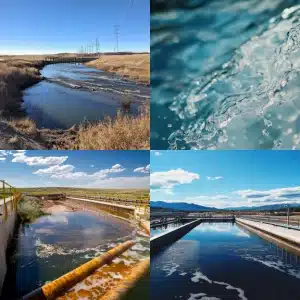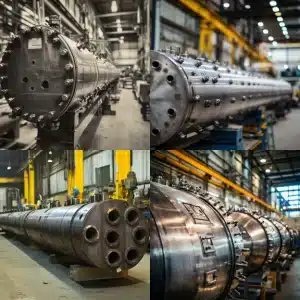
Structural failure analysis identifies the root causes of cracks, collapses, or weaknesses in buildings, machines, and pressure vessels, helping prevent costly downtime and accidents. By combining inspection, material testing, and prefabrication methods, companies like Red River LLC ensure safer, more reliable operations backed by ASME certifications.
Why is Structural Failure Analysis Matters
If you’ve ever wondered why beams bend, joints crack, or industrial equipment falters, you’ve already asked what is structural failure analysis. Overlooked flaws account for nearly 20% of unexpected shutdowns in heavy manufacturing (2022 data). The good news: spotting vulnerabilities early protects your team, investments, and operations. Below, we’ll uncover the essentials of structural failure analysis and why it matters. You’ll also see how it directly improves reliability, especially in critical pressure vessel applications where safety and durability are paramount.
Exploring What is Structural Failure Analysis
What is structural failure analysis? It is a method used to determine how and why a particular building, machine, or component can’t perform its designed function. Essentially, you examine the loads the structure must endure and identify where it might give way, crack, or fail. By assessing metal stress, weld integrity, and other mechanical factors, structural failure analysis uncovers the root cause of issues helping you prevent repeat incidents and improve long-term safety and reliability.
In simpler terms, it’s very much like troubleshooting a car that suddenly stops working: you check the parts step by step until you identify the root cause. The only difference here is you deal with large-scale industrial items such as beams, frames, and pressure vessels. Structural failure analysis often connects to broader disciplines of material failure analysis, mechanical failure analysis, or metallurgical failure analysis, since any weakening of the base material or mechanical components can trigger a full collapse.
When you systematically carry out structural failure analysis, you:
- Examine stress distribution within the component (like a metal beam or pressure vessel wall).
- Look for micro-cracks or irregularities that might have formed under repeated loads.
- Identify environmental factors such as heat or corrosive agents that exacerbate weakness.
- Cross-check whether the manufacturing process, like poor welding or flawed prefabrication, may have contributed.
By combining these angles, you see not only the direct cause of a collapse but also the “why” behind it. Incorporating structural analysis methods gives a deeper understanding of stress behavior and material performance. If you want to focus specifically on vessels under pressure, it’s helpful to pair structural failure analysis with pressure vessel failure analysis for a detailed perspective.
Identifying Structural Failure Causes
Not every structure collapses for the same reason. In many industrial and manufacturing settings, structural analysis methods show that structural failure typically stems from a combination of factors. Below are some of the most common culprits.
- Material defects: Low-quality or incompatible materials cause weaknesses that can spread rapidly. Defects might include casting flaws, hidden voids, or unaccounted-for impurities.
- Overloading and stress concentration: This can happen when your structure takes on more weight or pressure than it was designed for. Excess stress often builds up around weld seams and joints, leading to cracks.
- Extreme environmental conditions: Heat, cold, humidity, and corrosive chemicals all speed up degradation. Corrosion is especially dangerous—it can erode layers and thin walls until a minor hit becomes critical. (See is antifreeze corrosive?)
- Design or manufacturing errors: A small calculation slip during design can cause large cracks later. Similarly, inaccurate or rushed prefabrication methods might result in misaligned components that worsen over time.
- Improper maintenance: Neglecting inspections or skipping routine checks can allow small cracks to stay hidden. Left unchecked, these cracks can turn into major fractures. Scheduling regular evaluations, including thorough mechanical or structural failure analysis, helps catch these issues early.
No single approach can prevent every possible failure, but consistent vigilance and well-chosen materials go a long way. Understanding the causes of structural failure helps strengthen safety strategies. To see some broader reasons structures and vessels break down, you might explore what causes pressure vessel failure.
Applying Analysis in Pressure Vessels
When you place a fluid under pressure, any material flaw becomes more serious. This is why pressure vessels, including reactors, boilers, or large pressurized tanks, require extra care and a clear understanding of the causes of structural failure.
Here’s why structural failure analysis is critical:
- Pressurized contents add constant stress to vessel walls.
- Fluctuating pressures cause fatigue failures.
- Corrosive liquids or gases accelerate deterioration.
- Thermal swings (heat up, cool down) create expansion-contraction cycles.
By performing ASME-certified inspections before and after a vessel enters service, you reduce the chance of catastrophic release events. For deeper insights, see Red River LLC’s blog on vessel fabrication.
Where Red River LLC’s Work Intersects
Red River LLC, an ASME-certified pressure vessel manufacturer, is aware of the harsh realities vessels face daily. They deploy rigorous quality control, often surpassing guidelines, to ensure each product stands up to stress. This includes:
- Total material traceability.
- Thorough weld inspections.
- Advanced modeling simulations.
- Prefabrication techniques in controlled environments.
By the time a Red River LLC vessel arrives at your facility, all major sources of weakness have been addressed.
Ensuring Safety with Red River LLC Solutions
One obvious question is how prefabrication and modular build methods overlap with structural failure analysis. Red River LLC specializes in modular skids, removing uncertain on-site variables.
Here’s how this reduces collapse risk:
- Controlled environment manufacturing: Under consistent temperatures and minimal interference from outside conditions, weld quality remains higher, and materials keep their integrity.
- Thorough testing before shipping: Each modular skid or prefabricated component is tested for leaks, pressure tolerance, and alignment. By confirming stability early, the likelihood of unexpected cracks in the field drops considerably.
- Less total on-site work: Fewer hours on-site means fewer chances for mishandling or hurried craftsmanship that might leave micro-cracks or weaknesses behind. This also helps maintain a safer work environment for your team.
According to Red River LLC, factory-based prefabrication reduces on-site risks, streamlines installation, and ensures safer integration for chemical facilities and energy production environments.
Red River LLC’s certifications, including the NBBI R Stamp and ASME U4 & R, demonstrate compliance, ensuring safer, reliable systems across oil, gas, power, and industrial sectors.
What is Structural Failure Analysis and Your Next Steps
Structural failure analysis boils down to investigating, predicting, and preventing dangerous cracks or breaks in essential components, especially those working under intense pressures. You look at the materials, design factors, tolerances, and the real-world stresses that can push a system toward its breaking point. This reveals the root causes behind collapses and outlines your best defense against future incidents.
In industrial applications, especially around pressure vessels, structural failure analysis safeguards safety, reduces downtime, and ensures reliability when paired with Red River LLC’s ASME certification, prefabrication, and quality expertise.
Take Action with Red River LLC’s Expertise
If you want safer operations and reliable pressure vessels, partner with Red River LLC’s ASME-certified team. Their proven expertise in failure analysis, prefabrication, and modular builds ensures safety from day one.
Frequently Asked Questions
1. How to perform structural failure analysis?
To perform structural failure analysis, experts examine the damaged structure, collect data, test materials, and identify the root cause of the failure.
2. Why is structural failure analysis important?
Structural failure analysis is important because it helps prevent future accidents, improves safety, and guides better design and maintenance practices.
3. Is corrosion part of structural failure analysis?
Corrosion can weaken the material, so corrosion failure analysis forms part of the bigger structural picture. By identifying rust, pitting, or chemical aggressors, you reduce the stress that leads to bigger structural issues.
4. Why is prefabrication considered safer for structural integrity?
Prefabrication is done in a controlled environment, which ensures consistency in weld strength, material handling, and assembly. This significantly lowers the risk of mistakes introduced by on-site weather changes or time pressures.
5. Does Red River LLC do on-site structural failure analyses?
While Red River LLC emphasizes modular and prefabricated solutions to prevent many failures, they also follow rigorous inspections to ensure each custom pressure vessel or module meets ASME standards. You can consult them directly if you need deeper investigation or specialized checks.
6. Can structural failures be predicted before they occur?
Many failures show warning signs, like hairline cracks. With advanced modeling software and regular inspections, you can predict when a key component might exceed its safe stress limit. Early action might involve reinforcement, part replacement, or design modifications.
7. How often should I schedule structural failure analysis for my facility?
It depends on the working environment, loads, and materials used. As a rule of thumb, annual or bi-annual inspections, including thorough structural checks, are common in high-stress or high-risk applications (like pressure vessels or chemical processing plants).
Key Takeaways
- Regular checks are vital: Even small cracks can spread quickly.
- Prefabrication reduces risk: Controlling conditions in a factory setting helps ensure more reliable welds and components.
- Material choice matters: High-quality metals and strict adherence to ASME standards minimize structural defects.
- Red River LLC ensures compliance: Their certification, plus robust quality control, helps you trust that your equipment is built to handle stress.




